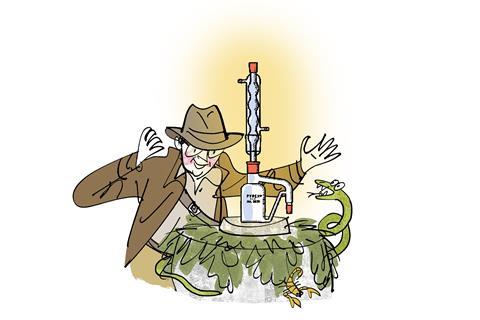Reframing the value of outdated practical techniques

As chemistry grows in a vast range of different directions, the toolbox of the bench chemist continues to swell. In this oncoming wave of automation, AI and assisted synthesis, older and lesser-used techniques are getting lost in the shadows. The rapid pace with which technology is augmenting chemistry leaves little time to reflect on, review and remember practices of the past – practices which are often still relevant and highly valuable.
The relentless and competitive nature of academic research demands high productivity. Many researchers don’t have the luxury of time to contemplate the benefits and drawbacks of all available methods, old and new – they need results, fast. Consequently, older, manual techniques that require additional time and effort are seen as a deadweight, and are discarded in favour of their newer, faster alternatives. This system of rejection perpetuates an unfair and inaccurate view that older techniques are obsolete and have little to offer, which, in turn, can discourage chemists from engaging with, or even considering, these older methods.
Reflecting on this rather unjust state of affairs, I’m reminded of my undergraduate industrial placement year. I had the challenge of isolating an incredibly water-soluble organic compound and unearthed a generally overlooked technique of purification: continuous extraction. As the name suggests, it essentially extracts highly water-soluble compounds into the organic phase by running the liquid extraction continuously over a long period of time.
This forgotten technique, among many others, still has some lessons to teach
With the glassware hidden in a storeroom and covered in dust, it became apparent to me that this was not a frequently performed procedure. My incredibly patient supervisor guided me through the set-up, likely holding her breath as I clamped the ancient glassware in place. I poured the aqueous phase into the extraction arm and fitted a clean flask of organic solvent for collection. Then, I lowered the collection flask onto the hot plate and wrapped the whole set-up in cotton wool and foil. The extraction worked wondrously, with the organic solvent adopting the burnt orange hue of the aqueous phase. Upon returning the equipment, my supervisor told me that it was unlikely to be used again for a long time. I thought it was a shame that the technique was overlooked, especially considering its success and relative ease of use. Even my experienced colleagues were intrigued by how it worked and found its results impressive, which suggests that this forgotten technique, among many others, still has some lessons to teach.
Older and potentially outdated practical chemistry techniques can also be invaluable learning tools. They often form the basis of their modern alternatives, so understanding the core theory of the original method can pay dividends when using their technologically advanced successors.
Before leaving for my placement, my tutor told me that, despite the readily available automated purification systems, I should make the effort to do at least one manual column chromatography purification. This wasn’t because he wanted me to suffer or develop a distaste for product isolation, but because he believed doing a manual column would provide me with a greater appreciation and understanding of the theory behind the method.
And yet I ignored his advice. During my placement and subsequent final year project, I always had an automated option to hand, enabling me to avoid what I perceived to be a manual waste of my time. In fact, it was two years after his comment, upon starting my PhD, that I packed the silica gel myself for the first time. After just one manual column, I realised why my tutor made his original plea. Although it was a disastrous purification and I lost my product, I also gained fundamental insight into the quirks and complexities of this dark art.
Processes that seem so familiar and irreplaceable today will eventually give way to new technologies
Many synthetic chemists will likely scoff and think ‘I do six manual columns a day, it’s not outdated or forgotten in my lab!’ and right you are – for now. However, the ever-changing face of chemistry means that processes that seem so familiar and irreplaceable today will eventually give way to new technologies and may well cease to be relevant. If we can recognise, extract and record the educational and methodological value of these techniques now, we can help establish their legacy for the future.
By remembering these practices of the past, we as a chemical community could develop a valuable resource for the education and training of all practical chemists, regardless of experience. For the sake of historical preservation, it would draw a clearer picture of what typically resided in the fume hoods of previous generations, a picture which continues to evolve at a rapid pace. Not only this, but a timeline of techniques would allow for the appreciation of how far practical chemistry has come, and would enable us to anticipate and influence how developing technologies can better enable our chemistry in the future.












No comments yet